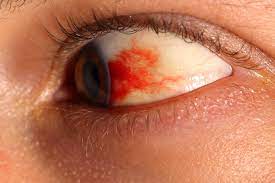Diabetes retinopathy is a complication caused by high blood sugar levels that damage the back of the eye (retina). If it is not diagnosed and not treated on time, it may lead to blindness. This condition usually takes several years to emerge and threatens the human vision.
When blood sugar levels are high, blood vessels in the retina are damaged. These unwanted blood vessels often swell and leak. They can also close, preventing blood from passing through. On the retina, abnormal new blood vessels can form. All of these changes have the potential to obstruct your vision.
Potential Causes of Diabetic Retinopathy
If you are dealing with diabetes, you are at significant risk of developing diabetic retinopathy. You are more vulnerable if you:
- You have been living with diabetes for quite some time.
- If your sugar levels are high.
- If you have high blood pressure problems.
- It may develop even if you have a high cholesterol level.
The chances of getting diabetic retinopathy can be reduced by controlling blood sugar levels, blood pressure, and cholesterol levels in the body.
Symptom Detection
Diabetic retinopathy is usually undetected in its early stages because it lacks obvious symptoms until it progresses. However, early signs of the condition can be detected by photographing the eyes during diabetic eye screening.
If you experience any of the following symptoms, contact your doctor immediately before it gets worst:
- Gradually deteriorating vision
- Floating shapes in the Vision Field
- Sudden vision loss
- Redness in the eyes, painting eyes, or even blurred vision
- Difficulty in vision in the dark
A thorough investigation of these symptoms is essential as they do not confirm diabetic retinopathy. Diabetic retinopathy, if left untreated, can lead to a variety of complications. Vitreous haemorrhage occurs when blood vessels bleed into the main jelly that fills the eye, known as the vitreous. Floaters are common in mild cases, but vision loss can occur in severe cases because the blood in the vitreous blocks lights from entering the eye. If the retina is not damaged, the vitreous bleeding may resolve on its own.
It can result in a detached retina in some cases. This can occur if scar tissue pulls the retina away from the back of the eye. It usually causes floating spots in the person’s field of vision, flashes of light, and severe vision loss. If a detached retina is not treated, there is a significant risk of total vision loss.
Glaucoma develops when the normal flow of fluid in the eye becomes blocked due to the formation of new blood vessels. The blockage causes an increase in eye pressure, increasing the risk of optic nerve damage and vision loss.
Diagnosis
Diabetic retinopathy usually begins without any visible changes in vision. An ophthalmologist, or eye specialist, can detect the symptoms. Diabetics should have an eye examination annually from a trusted Source or whenever their doctor recommends it.
It can be diagnosed using the following methods:
- Dilated eye examination
A dilated eye exam involves inserting drops into the patient’s eyes, which causes pulpal dilation. This allows the doctor to look inside the eye.
They will photograph the interior of the eye to look for cataracts, changes in eye pressure, if any, and retinal abnormalities that may be present.
- Optical Coherence Tomography
OCT is a noninvasive imaging scan that produces high-resolution cross-sectional images of the retina, revealing its thickness and allowing eye doctors to look for cysts or swelling.
- Angiography with fluorescein
An eye doctor inserts fluorescein dye into a vein in the person’s arm, which circulates through the eyes. This dye stain the abnormal blood vessels in the eye.
Papaya and Diabetes
Though fruits are generally considered healthy, some fruits contain more natural sugars than others, so overeating is bad for blood sugar. You may think, is papaya good for diabetes?
The good news is that if you have diabetes, you can eat papaya. Papaya has a medium GI which makes it a better choice to eat. Eating papaya helps in lowering your blood sugar; hence if you are thinking is papaya good for diabetes, is it absolutely healthy?
Conclusion
Diabetes retinopathy is an eye condition that affects diabetics. Without treatment, it can lead to complications such as vision loss. A comprehensive dilated eye exam at least once a year can assist in detecting the condition early and preventing complications.

